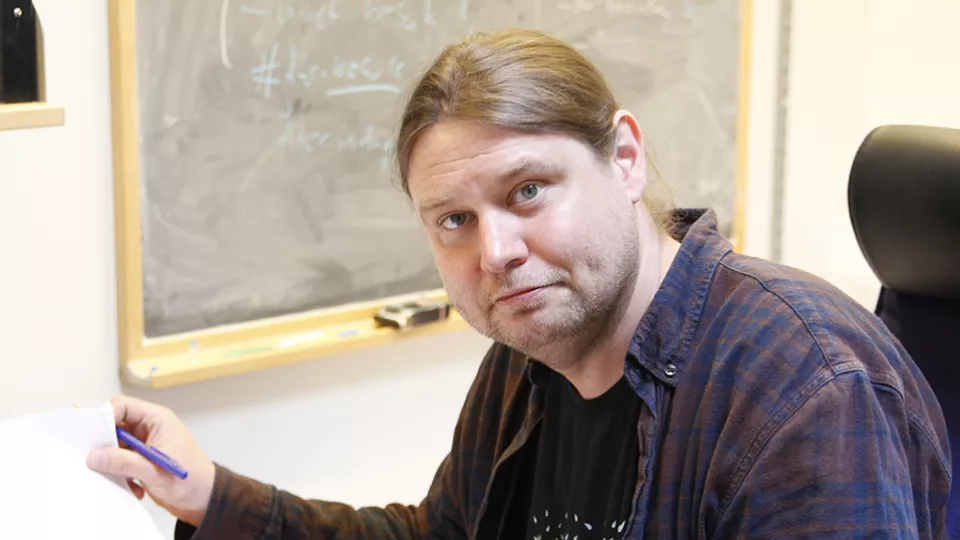Read the article by Lena Björk Blixt here or on Lund University’s website via this link.
“The goal is not only to improve the quality of care by ensuring that patients receive the right interventions, but also to contribute to the most efficient use of healthcare resources,” says Anders Björkelund, one of the researchers in the EU project. Image: Lena Björk Blixt.
Artificial intelligence will be used to improve healthcare for elderly patients with multiple conditions. This is the hope of a new research project, which also highlights deficiencies in communication between different healthcare providers at the municipal and regional levels.
The aim of the research project is to enhance the quality of healthcare for elderly patients suffering from multiple diseases, also known as multi-morbid patients. The goal is to reduce the number of emergency visits and hospital readmissions.
One of the project’s researchers is Anders Björkelund from Lund University. He specialises in computational science and is an expert in handling and analysing large datasets using machine learning, a form of artificial intelligence. In this project, he collaborates closely with medical specialists in both emergency care and geriatrics.
“We want to develop a computer model that, with the help of AI, can predict which patients are most at risk of being readmitted within twelve months,” he explains.
Valuable Information in Medical Records
The researchers are currently analysing data from all adult emergency visits in the Skåne region between 2017 and 2018 (see fact box). This is where artificial intelligence plays a key role. Patient records contain a vast amount of valuable information that can be highly beneficial in this context.
“Machine learning allows us to organise and identify patterns in these large datasets far more efficiently than traditional methods,” says Anders Björkelund.
The data includes medical history, prescribed medications, blood test results from emergency visits, previous medical examinations such as X-rays and ECG readings, as well as details of medical procedures like bypass surgery. Björkelund’s focus is for AI to identify the key factors that increase the risk of elderly multi-morbid patients requiring emergency care again.
Bridging Communication Gaps
The AI model will be trained not only on medical data from patient records but also on data from Statistics Sweden and the National Board of Health and Welfare to supplement the model with demographic and socio-economic factors.
Alongside the AI development, another crucial aspect of the EU-funded project focuses on improving communication between hospital and primary care when transferring patients between healthcare providers.
“In Region Skåne, hospitals and primary care facilities use different record systems and therefore cannot access each other’s medical documentation on patients. This is a problem,” says Karol Biegus, consultant geriatrician at Helsingborg Hospital and PhD student at Lund University.
Karol Biegus is responsible for the Swedish part of the EU project and is specifically working on solutions to the communication problem between healthcare providers. This issue exists in many regional healthcare systems. His proposal is to implement shared care plans accessible to all healthcare providers. These care plans would specify the medical treatment and follow-up care required for each patient.
Individual Medical Care Plans
The idea is that the AI model will first identify elderly multi-morbid patients at high risk of hospital readmission. Then, upon discharge, these patients will receive an individual medical care plan. This plan will highlight the most relevant patient information and will be developed in collaboration with the patient, primary care providers, and municipal healthcare services.
“The aim is to ensure that patients receive the appropriate follow-up care, thereby preventing unnecessary hospital readmissions,” says Karol Biegus.

